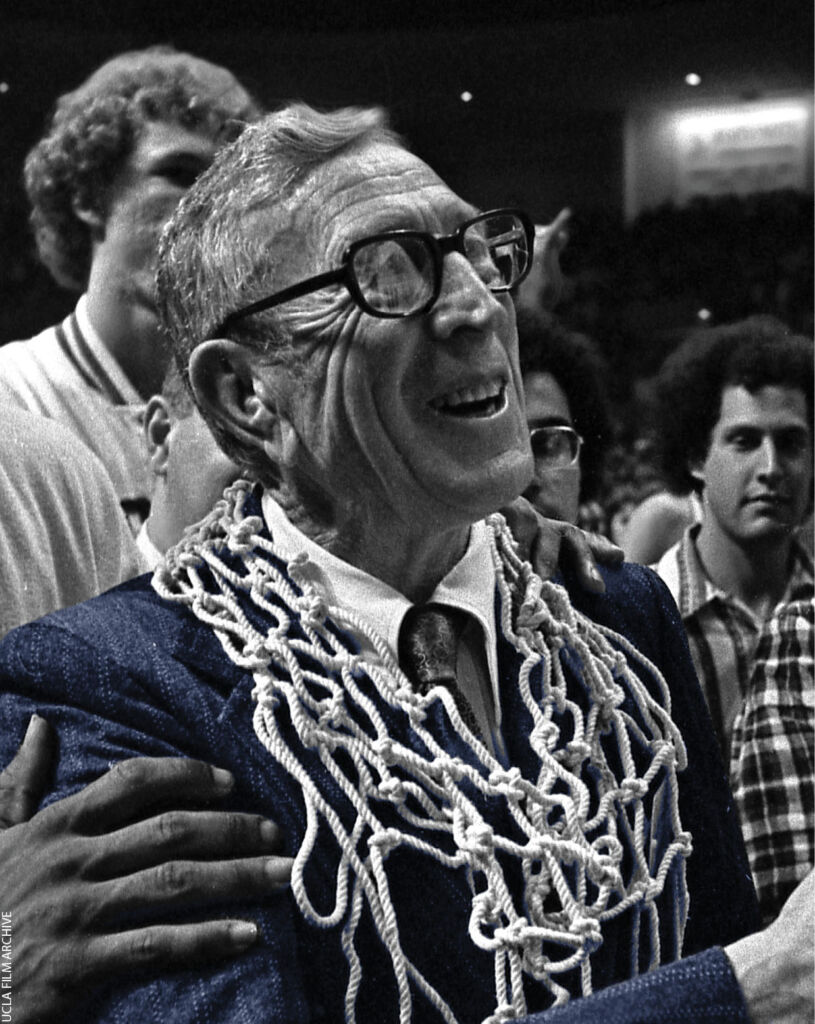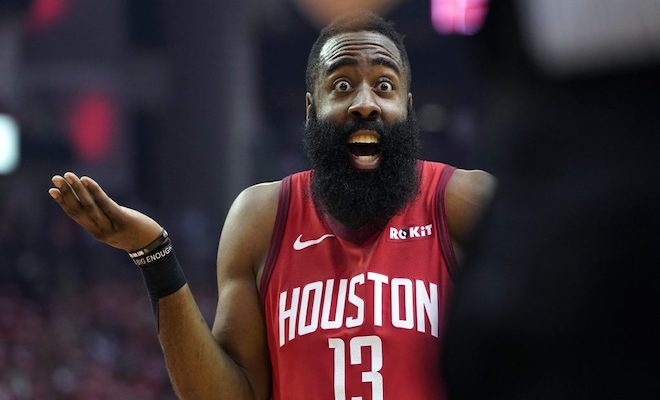-
 August 25, 2023, 5:18 pm
August 25, 2023, 5:18 pmIf you haven’t done an auction draft, do one. It’s a really really fun part of fantasy. But fun doesn’t mean easy. Auctions are similar to poker games. You will have a mix of aggressive players, passive players, clueless players, reckless players, calculating players, and who knows what. You all start at the same place and end up in different ones. There are clear winners and losers. That’s part of the fun. You should have a strategy, but be prepared to throw that strategy away if opportunities present themselves. You should know your playing style and comfort levels, but be prepared to test limits. You should use intel (e.g. which owners like certain players or teams, bid aggressively, etc) but be wary that people know what you know and play accordingly.
Auction Basics
Get the point? No two auction drafts are the same. Different owners, different bid dynamics, different player information, different bidding strategy. You can do mock auction drafts all you want but results can vary wildly. We will cover tactics later, but here are the basics:
- Every team starts out with a budget, usually $100, $200, or $300.
- Players are nominated one at a time, usually by each team. Some auction drafts can have multiple players up for auction at once.
- As each player is nominated with an opening bid, every team can bid on that player at any time. Teams can also bid on more than one player at a time as long as they have enough budget to cover all bids.
- A timer is reset with each new bid. If the timer expires on a bid then the high bid team claims that player and the auction price is deducted from the team’s budget
- Team’s can only bid as much budget as they have.
- Teams are sometimes required to win bids on a certain number of players to fill most or all of their roster spots before the auction draft concludes.
Auction Dynamics

Early round bidding is really really active. Everyone is hyped to start the draft and prone to react. Teams have their entire budget to spend. Free spenders dictate bidding. Bad things can happen like a team spending 16% of its budget on Larry Nance. Don’t get caught up in this. Most overbidding happens early so watch patterns. If there are players you absolutely want, you may need to overshoot your budget. If you go big early for guys make sure it’s for players that are worth it like Nikola Jokic, Jayson Tatum, Luka Doncic, etc.
The early rounds can really set the table for later rounds. If you can bump up bids on players that you don’t really want you can get competing teams to burn budget. Getting owners to burn capital can eliminate bidders and create less competition in later rounds. The best way is through nominations and watching teams dogfight. This can happen in later rounds but happens more early on when teams have a budget. You might even bid on players you don’t want just to bump the total spend of the bid winner. This is risky so a couple of warnings: Don’t try this on players that you think will bust out because you might get stuck with them. Also, this tactic is best played when multiple bidders are active on a player to lessen the chances you inadvertently win a player you may not want.
For example, in an auction I participated in two years ago, Giannis Antetokounmpo went for over 50% of a team’s budget. Last year in a different auction, still in his prime, Giannis went for less than 30%. Basically same player, different draft. Certainly an overpay in the first case. Seems like the teams that won this bid ultimately lost because they had to sit out much of the middle rounds due to the lack of budget.
Middle-round bidding generally slows as teams start to look at their remaining budget and what they need. Players are less attractive and the initial buzz wears off. Bid fatigue is a thing and as that sets in some solid players can be had at good prices. For example, in recent auctions premier PGs (Tyrese Haliburton, Luka, Shai Gilgeous-Alexander, etc) are bid up at a premium but some decent options (Jalen Brunson, De’Aaron Fox) usually go for more reasonable prices. The same was true of shot blockers.
The middle rounds are a good time to assess your competitive strategy. Consider how you plan to build and bid for that. This is a good time to start watching for position needs (yours and competitors’) and emerging category and position scarcities. In a dynasty format you have the option to bid on valuable assets at good prices rather than bid for need, then fill needs later through trades. In redraft consider building your team out with positions, punts, etc.
The late rounds are when teams can be reinforced, especially in deeper leagues. As teams run out of capital or focus on filling strategic needs there will be fewer bids on remaining players and therefore better bargains to be had. In deeper leagues end of roster production can be key to competing and here is where you can find older veterans and less attractive players at a very lost cost. You will also see some teams in roster crunches where they effectively can’t bid on players but still need to fill spots. So if you can save some budget for these rounds, it’s generally worthwhile as there are usually some tradable assets still available.
Auction Preparation

Everyone expects to have a good draft. Not all do. As Coach Wooden famously explained, “failing to prepare is preparing to fail.” It should be apparent by now that you need to study players, performance, projections, etc. as you would any draft. For auctions, you also want to study auction rules and settings. Do a mock or two to get used to the dynamic, especially if you are a newbie.
Perhaps more importantly you’ll want to get a sense of your bid strategy and potential “builds” e.g. “Studs and Duds,” balanced, punt-points, etc. Do you have specific targets and how much will you pay for them? What matters is what percentage of your budget you allocate to certain players. One useful exercise is to have an idea of what your final roster might look like, and maybe have a couple of versions that you can pivot to if your bids don’t succeed. Now match that to your budget and map out where you need to spend capital for critical players and where you have options. For me, Jokic and Luka are guys I have earmarked to spend up on this season. Every other player has a decent lower-cost option out there that gives you a little less production. If you think Victor Wembanyama is worth spending over budget on, please skip to the next section.
There are a few tactics in nominating players that you can utilize to tilt the bidding in your favor.
Dummy Nominations

To get other teams to burn capital consider nominating players that you don’t want but are still attractive. For example, I just don’t want guys like Kyrie Irving, James Harden, or Ben Simmons on my team. In addition to injuries there is the “wtf did they do now” risk, so no thanks. So I’ll throw them out early to flush out teams that do value them and let them spend away.
Stealth Nominations
Personally, I don’t like to nominate players I target because that lets others know I value those players and might invite additional bids. Let others nominate them and be ready when they do.
Shadow Nominations
Another tactic is to watch for position or category runs. Let’s say there are a few PGs on the board. If there is a PG you want that hasn’t been nominated yet you might consider nominating them while others are focused on active bids.
False Flag Nominations
Conversely, if you are in a bidding war over a player you want, you might consider nominating a similar player to attract attention away from the one you want.
Auction Principles
Auction variability makes it hard to define specific rules to follow in an auction. Here are some principles to follow drawn from personal experience that increase your chance of success.
Principle 1: Value is King
This is really the one principle that supersedes all others. Know player values. Crunch numbers, use tiers, whatever you like, but have an idea of relative value because you only have so much budget to spend and when it’s gone it’s gone. Do you have favorite players to target? Fine, but know what you should pay, know what is an overpay, and understand the cost to your team. I’d suggest a definite limit for “premium.” I use 10% over target and will overstep a little once in a while. But be mindful. “Bid creep” happens when you start telling yourself “It’s just one more dollar” and that turns into $5, then $10, etc. Those dollars may be more valuable later on in the auction.
One tip on auction mechanics: always bid in $1 increments. You may think you can scare someone off with a big bid up, but why? They may be ready to tap out and you just spent more of your budget for no reason.
The rest of these principles follow the value theme and how to maximize it.
Upside is a Sucker Bet

“Upside” is almost always overplayed and overpriced. It’s effectively paying for tomorrow’s performance today, and that’s risky, like buying “momentum” stocks. Stonks only go up, right? If you are that smart, go for it, but you are by definition playing catch up. Bid too much and you may never recoup your investment. Go back just four years ago and tell me what people bid on Josh Jackson. I’ll wait. Upside is a bigger consideration in dynasty leagues. Redraft upside should be a non-factor in your decision-making because of the short time frame.
Bottom line, let other teams pay for upside. Buying for value isn’t sexy, but it’s probably in your favor to do so because even established players can improve dramatically. For that matter, before last year who was talking about “upside” for Mikal Bridges and Lauri Markkenan? Two years ago this was Jaylen Brown.
Injury Risk is Manageable Upside
Owners generally shy away from bidding on players with injury history, but if priced accurately they can be valuable assets. Think of it this way: you know what the player can do when they play. If there is consensus that the player “always” misses games and if the player is underbid, you can find value there. The “upside” is any games played over the expected amount. And injuries aren’t as risky as they used to be. What would be really useful is a method to measure injury risk (more to come in our draft guide Injury Red Flag System!). For example, last year I got Kristaps Porzingis at about half of what I had him priced at. So I figured if he played more than 41 games then I would come out ahead, and I did. That’s upside. Similarly, we can take advantage of load management. Paul George probably won’t play more than 45 games ever again even when healthy. So whatever you price him at, if he comes in lower, why not take the chance on his health? You have the entire Clippers staff and Steve Ballmer on your side!
Related Preview: The SportsEthos Injury Red Flag System
Let Others Overpay for Youth
Youth is the slightly more attractive stepsister to “upside”. Same family, similar tease.
Think about any bid as an investment. An invested dollar today is worth more than a dollar tomorrow, and the further into the future the less value it has. Why not use this concept in pricing “youth?” A good career is 12 years. Are you really planning that far out? Not me. Great if you can load up on 20 to 22-year-olds, but how much more do you want to pay over what you would pay to roster 27 to 29-year-olds who will probably be productive into their 30s?
Four years ago rookies Jaxson Hayes, Jarrett Culver, and Kevin Knox all went in the same price range as Bojan Bogdanovic, Terry Rozier, and Andrew Wiggins. This was absolutely nonsensical “youth” bidding. You know how this story goes.
Endgame is Important
Early aggressive bidders sometimes spend too much and get stuck with too many positions to fill with too little capital. These bidders end up sitting out entire middle rounds and need to get lucky or scrounge waivers to build out a roster. If you are heads up against a bidder, see what they have left in their budget and what they need to fill. You can get a sense of how high they would go against you.
Conversely, make sure you spend your money. Some bidders who are too conservative have more capital at the end of auctions than productive players remain. This is as wasteful as overbidding and goes back to knowing what you can bid and what you ought to bid at all times.
Auction Conclusion
A good draft based on value means you are in a great position to do deals and dictate future deals. A bad draft means you are “short-stacked” in any negotiations.
If you follow these principles you ought to have a good basis to compete, and certainly some experience and lessons learned for the next auction. Good luck!
